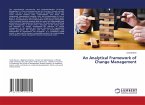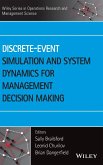System-wide performance analysis of manufacturing setup helps a company to stay competitive. This can be done by selecting appropriate performance analysis tool which can save time and effort. As a problem assembly line systems are difficult to completely model and analyze using either of analytical or discrete-event simulation (DES) models. The main objective of this study is to analyze the distinct modeling capabilities of analytical modeling approach and DES approach so as to take their respective primacy for analysis of particular pertinent parameters suitable for Tana Communication (TC assembly line). Both analytical and discrete-event simulation models are developed for TC production process using decomposition approach and AnyLogic software. The results from the two models for work in process, queue cycle time, cycle time and resource utilization have high degree of agreement. By making reassignment of operators from the idle stage to the bottleneck stage the system waiting time and work in process is reduced by 12% and 13% respectively from the proposed model.
Bitte wählen Sie Ihr Anliegen aus.
Rechnungen
Retourenschein anfordern
Bestellstatus
Storno








